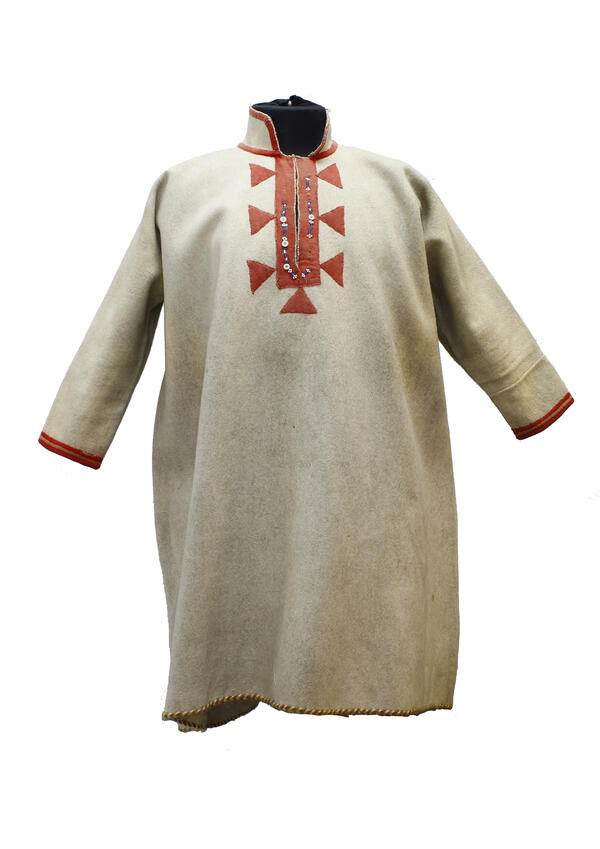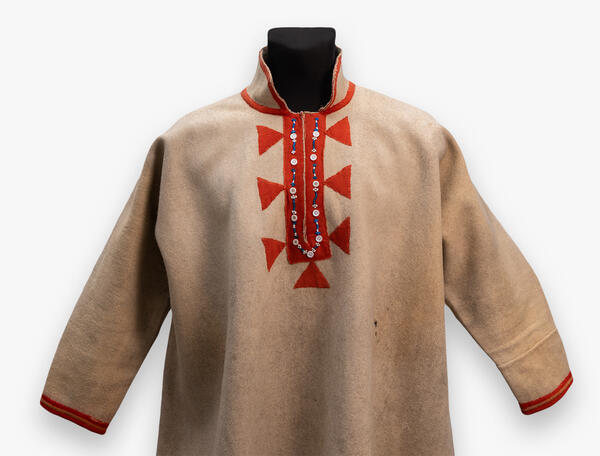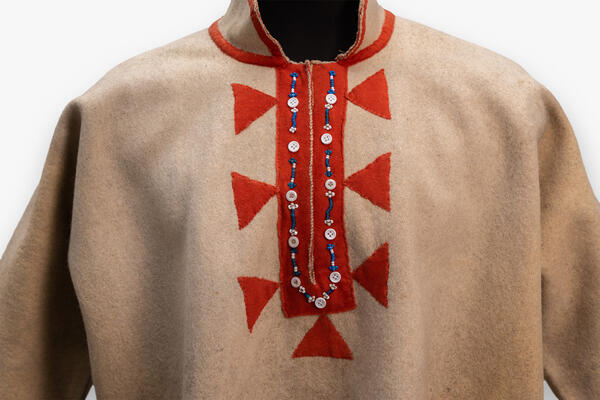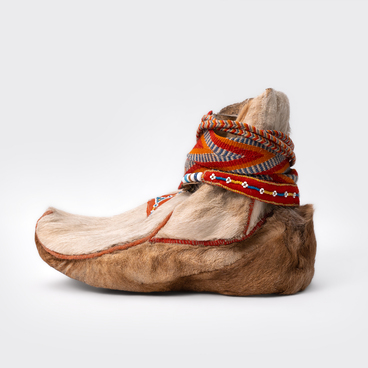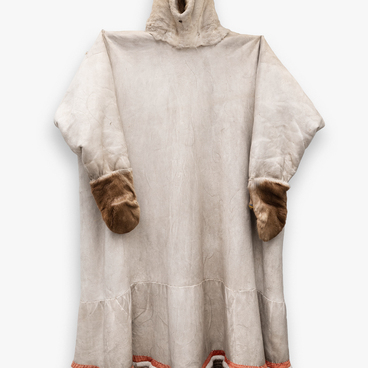A yupa is a traditional outer cloth garment of the Sami people living on the Kola Peninsula. It is a straight shirt. It was usually worn in summer, but could be worn under warm clothes, for example, under a pechok. Yupa was considered to be work clothes, albeit decorated.
In cut, a yupa resembles a pechok or torca, but is more ornate and not as loose.
A yupa was a late addition to the Sami traditional costume, as it was made of cloth, which the Sami did not produce themselves. Like other materials and items not native to the Far North, cloth appeared in the Sami households along with the developing trade contacts. In the 18th century, the Sami began to buy cloth from visiting merchants — Swedes, Finns and Russians. It was around that time when they began to sew yupas.
White cloth was used to make yupas for women and gray cloth for men. The yupa had a 20–22 centimeter slit in the front, along which a strip of the same material was sewn and lined at the edges with colored braid.
Yupas were usually decorated with colored cloth flaps and beads, arranged on the collar and along the slit on the chest. The sewn-on collar, lined along the edge with colored braid, was fastened with buttons. The yupa was fastened from right to left with one or two homemade brass buttons and hanging loops of twisted narrow strap.
Sami people decorated many kinds of items, including yupas, with cloth appliqué work. When decorating traditional items with cloth, they used pieces of fabric of bright colors: red, yellow, blue. To make appliqué work on cloth more ornamental, it was supplemented with beads, mother-of-pearl buttons, and silver or gold braid. Large-sized motifs prevailed in cloth appliqué. Fine patterns were rare. The decorative patterns consisted of very simple geometric compositions.
The hem could be somewhat flared. Woven woolen braid was used for hemstitching. The hem was decorated not on the edge, but 30–40 centimeters above it.
At the end of the 19th century, ethnographers noted
the gradual replacement of the yupa by the Russian sarafan among some Sami
women, since contacts between the two peoples were increasingly close as were
cultural exchanges between them.

